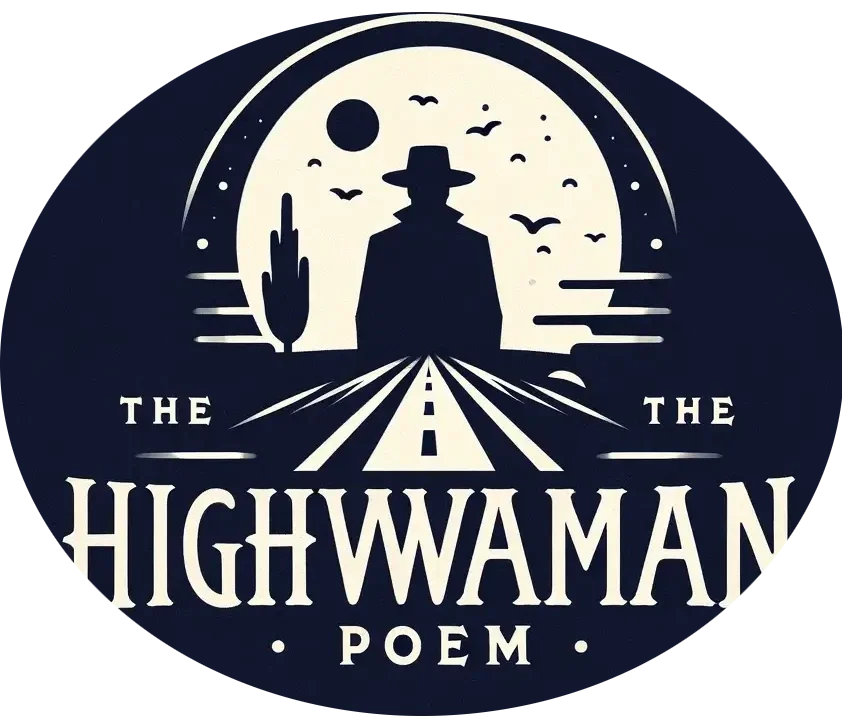Famous poems can captivate us with their vivid imagery, profound meanings, and timeless themes. Over the centuries, poets have crafted verses that resonate with readers of all ages and cultures.
From William Shakespeare’s sonnets to Maya Angelou’s powerful words, famous poems have left an indelible mark on the world of literature.
This article will explore the themes that have emerged as common threads in some of the most beloved and renowned poems.
Who Are the Most Revered Poets?
When I reflect on renowned poets, many names immediately come to mind. These literary titans have left a lasting impact on the world of poetry, and their verses continue to resonate with readers of all ages.
Some of the most famous poets include Emily Dickinson, Robert Frost, Maya Angelou, and William Shakespeare. While countless talented poets are out there, only a few have achieved the level of popularity and influence that sets them apart.
Shakespeare has joined the chat. His sonnets and plays have impacted English literature, and his words are still recited and studied today. Emily Dickinson, known for her enigmatic and deeply personal poems, is another beloved figure in poetry.
Her ability to capture the complexities of human emotions in her verses has earned her a special place in the hearts of many.
Robert Frost is widely admired for his contemplative poems that often draw inspiration from nature. His work speaks to the human experience in profound ways.
On the other hand, Langston Hughes was a prominent figure of the Harlem Renaissance who used his poetry to explore themes of race, identity, and social justice.
As a result of his contributions to the literary world, he is revered as a great poet of his time and beyond.
Alfred Noyes, the mastermind behind “The Highwayman,” is a revered poet. His narrative poem has captured readers’ hearts and has been adapted into various forms of media.
Although there are countless poets to admire, these individuals have made their mark on the world of poetry. Their words remain a source of inspiration, resonating with us and reminding us of the enduring power of verse.
What Are the Hallmarks of Famous Poems?
One of the critical characteristics of poetry is the use of vivid and evocative imagery. Poets often create mental images with words, allowing readers to visualize, hear, and feel what the poet is trying to convey.
For instance, whether it’s William Wordsworth’s description of daffodils swaying in the wind or Maya Angelou’s striking imagery of a bird trapped in a cage singing, these poetic images remain in our minds.
One of the distinguishing features of poetry is the use of metaphors and symbolism. Eminent poets such as Emily Dickinson and Robert Frost skillfully employ these literary devices to convey more profound meanings.
Metaphors can transform the mundane into something extraordinary, while symbolism enriches the verses with layers of complexity.
Meter and rhyme, though not always present, are also standard features. The rhythmic flow of poetry, whether through structured rhyme schemes like sonnets or the free verse of Walt Whitman, has a musical quality that enhances the reading experience.
Famous poems often explore universal themes such as love, nature, life, and death. These themes resonate with readers across cultures and periods. Poets like Sylvia Plath and Langston Hughes have delved deeply into these topics.
How Have Poetic Styles Evolved?
As I explore the vast world of poetry, it becomes evident that poetic styles have undergone fascinating transformations across different eras. Each period in literary history has left its unique imprint on the art of poetry.
Starting with the classical era, poets like Homer and Virgil crafted epic poems celebrating heroes and gods. Their verses were structured with strict meter and rhyme schemes, making them memorable and easy to recite.
Moving to the Romantic era, poets like William Wordsworth and Samuel Taylor Coleridge rebelled against the rigid norms of the past. They embraced nature as a muse, expressing deep emotions and individualism. Romantic poetry often featured vivid imagery and an emphasis on personal experiences.
The Victorian era introduced a more structured and formal approach. Poets like Alfred, Lord Tennyson, and Robert Browning explored themes of love and society with elaborate language and complex narratives. Their works reflected the societal norms of the time.
The 20th century saw a dramatic shift with the advent of modernism. Poets like T.S. Eliot and Ezra Pound rejected traditional forms and experimented with fragmented narratives, stream-of-consciousness, and free verse. This period challenged conventional understanding and brought about innovative ways of expressing ideas.
The contemporary era continues to evolve poetic styles. Poets like Maya Angelou, Langston Hughes, and Sylvia Plath have explored identity, social justice, and personal struggles. Their works often blend traditional and modern elements, showcasing the ever-changing nature of poetry.
What Are the Hallmarks of Famous Poems?
It’s impossible to pick the best poem since it is subjective and personal. Every individual has their own favorite poem that resonates with them.
However, some of the most famous poems of all time include William Shakespeare’s “Sonnet 18” and Robert Frost’s “The Road Not Taken.”
The most famous poet in the world is a difficult question to answer since there are so many renowned poets throughout history. However, William Shakespeare is undoubtedly one of the most famous and influential poets ever.
His work has significantly impacted the English language and literature, and his plays and sonnets continue to be studied and performed worldwide.
Countless less well-known poems are worth exploring. For instance, “The Love Song of J. Alfred Prufrock” by T.S. Eliot, “Do Not Go Gentle into That Good Night” by Dylan Thomas, and “The Waste Land” by T.S. Eliot are all brilliant poems that are lesser-known than some of their counterparts.
The three main types of poems are narrative, lyric, and dramatic. Narrative poems tell a story, like “The Odyssey” by Homer. Lyric poems, like “Sonnet 43” by Elizabeth Barrett Browning, express personal feelings or emotions.
Dramatic poems are written in verse and are meant to be performed, like William Shakespeare’s plays.
What Themes Resonate in Famous Poems?
One of the most prevalent themes is love. Whether it’s the passionate love in Shakespeare’s sonnets, the unrequited love in Emily Dickinson’s verses, or the enduring love in Elizabeth Barrett Browning’s “How Do I Love Thee?”, poets have explored the complexities and emotions of love in countless ways.
Nature is another timeless theme that has captivated poets across centuries. From Wordsworth’s celebration of the natural world in “I Wandered Lonely as a Cloud” to Robert Frost’s contemplation of choices in “The Road Not Taken,” nature is a backdrop for introspection and contemplation.
Many also delve into the human condition, addressing topics like mortality, the passage of time, and the quest for meaning. T.S. Eliot’s “The Waste Land” explores the disillusionment of the modern age, while John Keats’ “Ode to a Nightingale” grapples with the fleeting nature of joy.
Social and political themes have played a significant role in poetry as well. Langston Hughes’ “Harlem” vividly portrays the deferred dreams of African Americans, while Maya Angelou’s “Still I Rise” stands as a powerful anthem of resilience in the face of adversity.
How Are Famous Poems Received and Interpreted?
One of the remarkable aspects is their ability to resonate with different generations and cultures. For instance, William Blake’s “Tyger Tyger, Burning Bright” continues to captivate readers today, just as it was first published in the 18th century.
The poem’s enigmatic nature has led to many interpretations, from discussions on innocence and experience to the darker aspects of human existence.
The reception can also evolve with changing societal norms and values. Take, for example, Walt Whitman’s “Leaves of Grass.” Initially met with controversy due to its bold exploration of sexuality and individualism, the collection is now hailed as a cornerstone of American literature. This transformation in reception highlights how society’s perspective on specific themes can shift over time.
Additionally, they often invite diverse interpretations. Emily Dickinson’s cryptic and concise style in “Because I Could not Stop for Death” has led scholars and readers to offer various readings, from a meditation on mortality to a metaphorical journey of life’s stages.
Furthermore, famous poems have the unique ability to transcend language barriers and resonate with audiences worldwide. Pablo Neruda’s “If You Forget Me” beautifully captures the universality of love and longing, with translations allowing people from different cultures to appreciate its emotional depth.
How Are Famous Poems Received and Interpreted?
Poetry has the remarkable ability to capture the essence of human experience. Poems like “Still I Rise” by Maya Angelou and “Harlem” by Langston Hughes have become anthems of resilience and hope for marginalized communities.
These poems have empowered individuals to confront injustice and inequality, inspiring social movements and leading to positive change.
T.S. Eliot’s “The Waste Land” challenged traditional poetic forms and reflected the disillusionment and fragmentation of the post-World War I era, revolutionizing modernist poetry and influencing generations of poets.
Famous poems have also shaped our understanding of love and beauty. Shakespeare’s sonnets have set the standard for expressions of love, while Robert Frost’s “The Road Not Taken” resonates with those facing life-altering choices. These poems have become part of our cultural vocabulary, guiding our emotions and decisions.
Often, they find their way into popular culture. The Beatles’ song “Blackbird” was inspired by the civil rights movement and was influenced by Paul McCartney’s admiration for the poetry of Sylvia Plath. This fusion of music and poetry has enriched our artistic landscape.
Concluding Thoughts on the Essence of Famous Poems
Whether it’s the timeless themes of love, the raw exploration of human emotions, or the searing critique of society, famous poems continue to captivate hearts and minds. Their impact on culture undeniably shapes our values and beliefs and inspires social change.
Moreover, these poems serve as a testament to the power of language. They demonstrate that words, carefully chosen and artfully arranged, can transcend time and place. They remind us of the beauty of simplicity and the complexity of the human soul.


